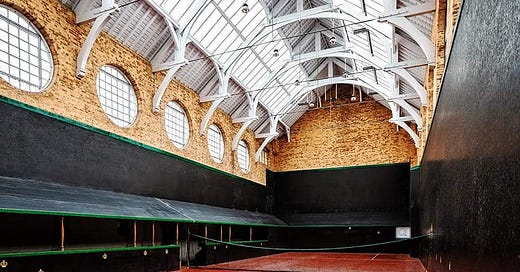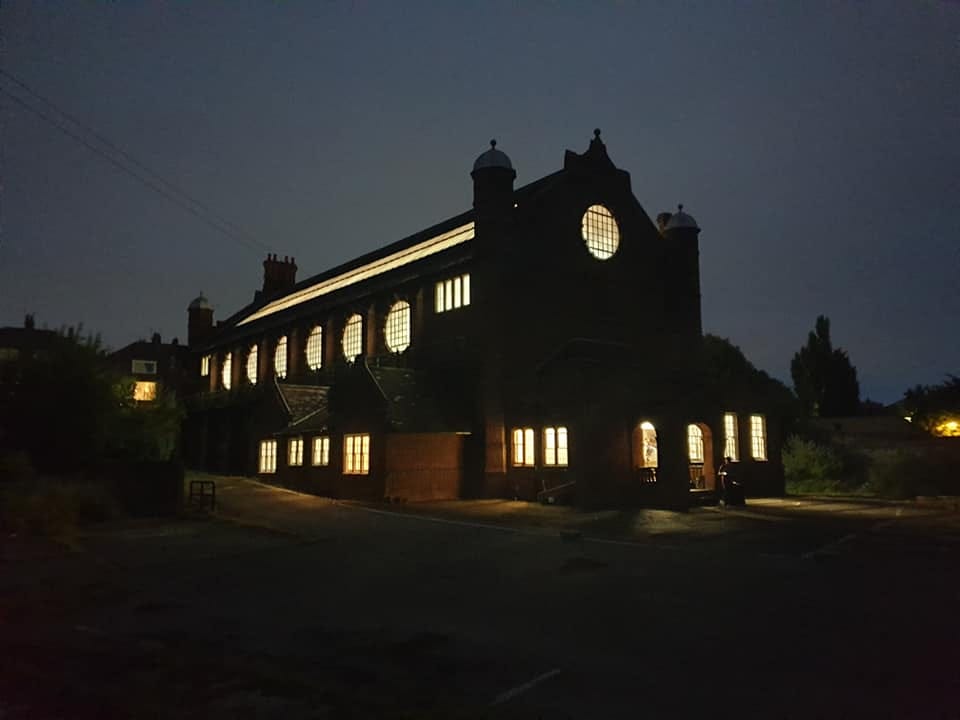Jesmond Dene Real Tennis Club, Newcastle
A superb suburban court is home to one of the world's rarest sports

Spread the word. One of the world’s oldest and rarest sports is quietly thriving in a Newcastle suburb.
There are just 47 real tennis courts in operation worldwide today, but Jesmond Dene is one of them. This ancient game, the original racquet sport and once beloved of European royalty, has a devoted band of followers and is eager for more to join.
Based in a spectacular late 19th-century building in the grounds of the Jesmond Dene House Hotel, the real tennis club secured its long-term future a few years back. And now, as Simon Harris explains, it’s ready to expand.
“The more the merrier,” Simon said. “That’s what we’re looking for. We have about 80 members, but we’d really like about 120. That’s the sweet spot for numbers. We want to get more use from the court, but not so many players that it makes it difficult for everyone to get a game.”
The game itself has a long history. The heraldic crowns painted onto the walls of the court reflect royal connections. Henry VIII was a famous fan and his palace at Hampton Court boasts one of the busiest courts in the country, with around 500 members. In Shakespeare’s Henry V, when the French Dauphin taunts young King Hal with a gift of tennis balls, this is the game he and his Elizabethan audiences had in mind.
Those balls are not the ones you’d see at Wimbledon, either. Hand stitched felt covers a surprisingly heavy centre. It feels more like a baseball than a lawn tennis ball. That influences the distinctive shape of the racquet. Heavy balls don’t bounce so high, so the head is at a slight angle, the better for scooping a low shot off the ground.
The court, too, is very different from the lawns of the All-England Club. It reflects the game’s possible origins in the streets of medieval Europe, or the cloisters of our cathedrals and monasteries. Either way it’s not hard to see how the ‘galleries’ on three sides of the court might take inspiration from covered walkways clinging to the ancient buildings of a city in the Middle Ages.
“Basically, this is the original racquet sport. It’s been played for hundreds of years,” Simon said. “It probably originated in France or Italy, somewhere in Europe, but nobody knows for sure.
“We think it started as a street game, which is why we have these arcades and enclosed walls. It would have been a game of the people, but that changed when the aristocracy started building these big indoor courts.
“Today there are only a few dozen of these courts left in the world. The nearest to us is in Manchester.”
Two revolutions contributed to the sport’s decline. The French Revolution of 1789 wiped out the aristocracy. Hundreds of courts were abandoned as the masses turned their back on an ‘elitist’ game. Then the industrial revolution gave us the lawnmower and beautifully manicured swathes of turf made lawn tennis possible.
As for the game itself, forget about what you’ve seen at Wimbledon. There is little in common between games that have very different courts and rules. At first, real tennis might appear daunting with its languages of ‘dedans’ and ‘grilles’. The walls are very much in play, with a good serve dropping into the receiver’s court via the roof of the adjacent penthouse.
“It can sound complicated,” Simon admitted. “But it makes much more sense when you’re actually playing it rather than talking about it.”
‘Hopefully now it’s safe forever’
Another complication in recent years came off the court. Since re-establishing the club in the early 80s, Jesmond Dene’s real tennis players paid a monthly rent to the city council and enjoyed a long-term lease. However, as that lease expired, it coincided with City Hall’s decision to sell up. Tensions between landlord and tenant threatened the club’s long-term future until the intervention of Cllr Ged Bell helped to secure an extended lease.
“[Cllr Bell] came down and had a look and he decided not to sell this,” Simon recalled. “He told the property department to remove the court from the bill of sale and gave us a new 250-year lease on a peppercorn rent.”
Better news followed. Part of the deal meant that the club could take over the freehold if it completed renovations that were neglected during the contractual wrangling. Three months of hard work later, the court was back to its best and the future of the sport was secure.
“Now the club is a PLC and a charity and hopefully it’s safe forever,” said Simon.
The move may not have been to the council’s cost either. “If a developer had bought the building, there’s a limit to what they could do with it,” Simon added. “It’s a Grade II listed building, so it couldn’t be converted into apartments or anything like that. I think most developers would have seen it as a disadvantage rather than a feature.”
‘A spectacular building’
For lovers of sport, or of late Victorian architecture, F.W. Rich’s building is very definitely a feature. The Newcastle-based architect apparently relished the unusual commission and created an airy masterpiece. Stepping on court, there’s a real sense of space and light. Skylights in the ceiling and two lines of big windows at the highest level maximize natural daylight, while a relatively recent refurb added additional lighting for those not infrequent grey Tyneside days. Admittedly, the local climate is less challenging than the one facing Britain’s oldest surviving court, Scotland’s Falkland Palace. Dating from 1538, it’s older than the more famous venue at Hampton Court, but lacks a roof – not always ideal in rainy Fife.
For Simon, the Jesmond court stands out among its peers. “It’s a spectacular building,” he said. “This one probably has the highest ceiling and, compared to a lot of courts, it gets a lot more natural light.”
It was built in 1894 for Sir Andrew Noble, the splendidly bewhiskered owner of Jesmond Dene House. Back in the day, the renowned engineer and his distinguished guests would stroll through the gardens to play a set or two on his private court. A house at the Matthew Bank end of the building remains home to the club pro, currently Mark Eadle, who migrated north and fell in love with both real tennis and real Geordies. In the 1930s, the whole site - hall, grounds and tennis court - came under council ownership and was used as a school and a wartime warehouse before a badminton club moved in, delighted with the high ceilings. Real Tennis returned in the early 1980s, encouraged by a group of local enthusiasts.
There’s a nice historical coincidence. One of the patrons of the 1981 renovation of the court was the actor Sir Ralph Richardson, an enthusiastic but, by his own admission, poor player. One of his most famous roles was Sir Edward Grey in the film of ‘Oh What a Lovely War’. Decades earlier, Grey, a descendant of Charles Grey (of monument fame) and an acquaintance of Noble, played on the Jesmond court; Richardson’s support of real tennis in Jesmond subtly evokes the court’s earliest years.
Sport for All
Today, Real Tennis is no longer the preserve of royalty, nor even the aristocrats of the English stage. The Jesmond court is keen to boost membership – currently 80, ideally about 120 – and is also using its space to welcome fitness classes and business networking events as well as tennis players.
But the game remains at the heart of the club and it’s uniquely welcoming to beginners. A handicap system, which applies at all levels around the world, means that players of differing skill levels can still enjoy a competitive game. “If you have a handicap of 40, and I have a handicap of 30, we’d play with a 10-point difference. That means I’d start each game on -15, and you’d start on +15 so I’d have to win five points while you’d have to win three. And it works. New players have a chance to play more skilled opponents and improve their game.”
In addition, because of that heavy ball, women can challenge men on a more or less level playing field. “It’s not like lawn tennis, where men whack the ball so hard,” Simon added. “It really doesn’t apply. In real tennis, the serve is more of a defensive shot.” Reflecting this, a partnership with Wild Women Adventures is working to attract more women to the sport.
Then, from a social point of view, the club will set up games for you. “You don’t need to know anybody. At most lawn tennis clubs, you find people need a group of friends to play with, but here you can book a slot when you want a game, and part of Mark’s job is to find another member to come and play you at that time,” Simon said. “You don’t need to know other members; we will find you an opponent.”
Anybody interested in getting involved can reach the club via Facebook, phone 0191 2816854 or email club@jdrtc.co.uk.






